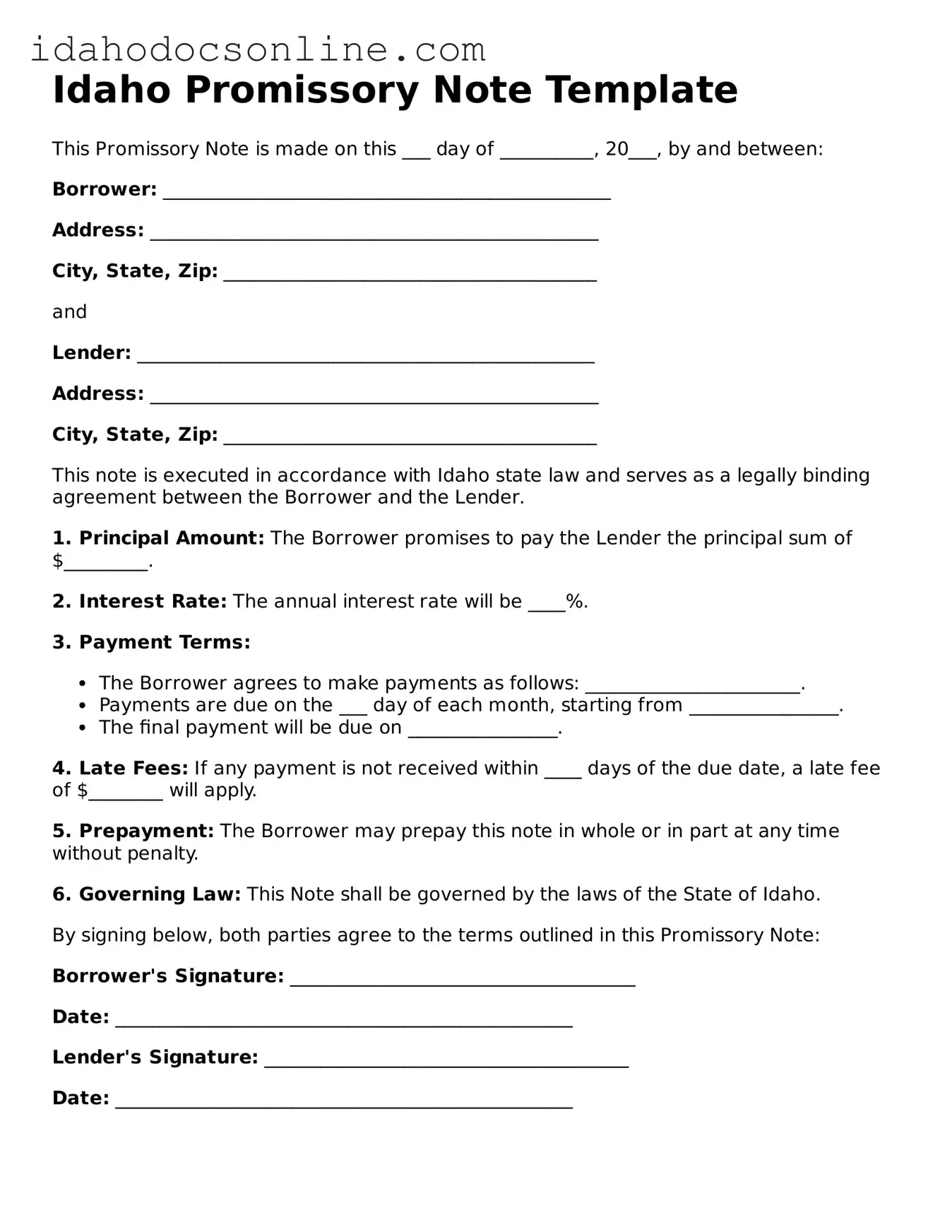Idaho Promissory Note Template
This Promissory Note is made on this ___ day of __________, 20___, by and between:
Borrower: ________________________________________________
Address: ________________________________________________
City, State, Zip: ________________________________________
and
Lender: _________________________________________________
Address: ________________________________________________
City, State, Zip: ________________________________________
This note is executed in accordance with Idaho state law and serves as a legally binding agreement between the Borrower and the Lender.
1. Principal Amount: The Borrower promises to pay the Lender the principal sum of $_________.
2. Interest Rate: The annual interest rate will be ____%.
3. Payment Terms:
- The Borrower agrees to make payments as follows: _______________________.
- Payments are due on the ___ day of each month, starting from ________________.
- The final payment will be due on ________________.
4. Late Fees: If any payment is not received within ____ days of the due date, a late fee of $________ will apply.
5. Prepayment: The Borrower may prepay this note in whole or in part at any time without penalty.
6. Governing Law: This Note shall be governed by the laws of the State of Idaho.
By signing below, both parties agree to the terms outlined in this Promissory Note:
Borrower's Signature: _____________________________________
Date: _________________________________________________
Lender's Signature: _______________________________________
Date: _________________________________________________
